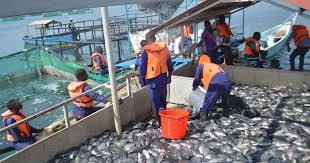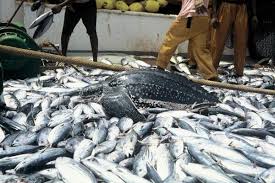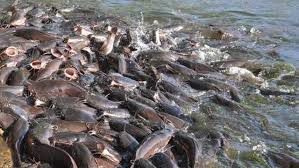Several authors and groups have defined the term conservation in different ways. Three of such definitions are given in this article. Various issues related to conservation, such as conservation legislation and the constraints of implementing Agenda 21 in Nigeria, are also discussed.
Definitions of Conservation
There are many definitions of conservation given over the years by individuals or groups (Olver, et al., 1995). A few of them are given here:
- “The use of the natural resources for the greatest good of the greatest number of people for the longest time” (Pincot, 1947).
- “Management of human use of the biosphere so that it may yield sustainable benefit to present generations while maintaining its potential to meet the needs and aspirations of the future generations” (International Union for the Conservation of Nature and Natural Resources, 1980).
- “Management of human use of organisms or ecosystems to ensure such use is sustainable. Besides sustainable use, conservation includes protection, maintenance, rehabilitation, restoration, and enhancement of populations and ecosystems” (World Conservation Union, United Nations Environmental Programme and Worldwide Fund for Nature, 1991).
Read Also: How often you need to Change Water in your Fish Farm
Principles of Conservation

The primary goal of fisheries management is to ensure the perpetuation of self-sustaining stocks of indigenous aquatic species and, where possible, to allow their sustainable use. Aquatic ecosystems should be managed to ensure long-term sustainability of native fish stocks.
The key to conservation is sustainability of naturally producing wild stocks of native fish. Stocks are the repository of genetic diversity within each species and are the building blocks on which fisheries management is based. The sustainability of fish stocks requires the maintenance of their supporting native community. It also requires the protection of the specific physical and chemical habitats utilized by the individual members of the stock population (Olver, 1995).
Objectives of Conservation
Several reasons have been given for the conservation of wild species of plants and animals. Conservation is important for economic, medical, scientific, ecological, aesthetic, and recreational values of species.
1. Economic and medical importance of wild species: Food crops and animals are sourced from the wild. Existing wild stocks are needed for producing improved strains. Medicines from plant and animal sources, such as plant extracts derived for drugs (e.g. antibiotics from microorganisms like penicillin and tetracycline), are also vital.
2. Ecological services: Wild species provide key services that are crucial in sustaining the earth’s biodiversity and ecological integrity. They supply food, recycle nutrients, generate and maintain soils, produce oxygen, absorb pollutants, moderate the earth’s climate, regulate local climates and water supplies, reduce erosion and flooding, store solar energy, detoxify poisonous substances, breakdown organic wastes, and control pests and disease carriers.
3. Aesthetic and recreational importance: Wild species serve as sources of beauty and recreation.
4. Ethical importance: Species have rights to exist and each species has its intrinsic value unrelated to its usefulness to man.
Causes of Declining Fish Stocks

1. Overfishing/overharvesting: The rate of fishing is greater than the ability of the stock to replenish or replace itself.
2. Habitat loss/destruction: Deforestation, sand filling of wetlands for construction purposes, and destruction of coral reefs by dynamite fishing are examples of this.
3. Habitat fragmentation: This is a form of habitat destruction involving the removal or modification of the original habitat, leaving only patches. It leads to degeneration of biodiversity, disruption of life cycles, and isolation of some animals in islands of habitats.
4. Introduction of species: The introduction of species creates problems such as predation, uncontrolled breeding due to a lack of natural checks and balances, disruption of food chains, and competition for resources.
5. Pollution: Pollution, including oil and industrial pollution in coastal areas and wetlands, lowers habitat quality. Excessive release of chemicals poisons habitats, spreads through food chains, and causes loss of aesthetic values, species mortality, and changes in ecosystems.
6. Trawling for fish: Trawling disturbs the benthic ecosystem.
7. Human population pressure: The increasing human population puts stress on natural resources, including fish stocks.
8. Poor agricultural practices: Destruction of watersheds, clearing of riverbanks, and excessive use of agrochemicals contribute to environmental degradation, such as siltation and chemical persistence.
Biodiversity Most Affected by Human Impacts
Human impacts on the environment, such as habitat loss and pollution, do not threaten all groups of biodiversity equally. The most affected groups are species with small population sizes and slow rates of population growth. The groups most susceptible to extinction include:
1. Species at higher trophic levels: Large, rare animals with slow rates of population growth are susceptible to overexploitation and habitat loss.
2. Local endemics: These species have restricted ranges and are often threatened by habitat loss, water development, pollution, or habitat alteration, which can easily drive them to extinction.
3. Species with small populations: Species at higher trophic levels often have low populations, and habitat restrictions or fragmentation may reduce their numbers to critically low levels.
4. Large species: These species have high metabolic demands, require large habitats, and occur in low densities, making them highly vulnerable to extinction.
5. Species with poor dispersal and colonization abilities: Species with narrow habitat requirements and limited dispersal abilities are at high risk of extinction.
6. Species with colonial nesting habits: Such species are vulnerable to overexploitation or loss of breeding habitat.
7. Migratory species: These species depend on suitable habitats along migratory routes and during different seasons, making them highly susceptible to adverse habitat effects.
Read Also: 14 Medicinal Health Benefits of Ghost Pepper (Capsicum Chinese)
Conservation Methods for Fisheries

1. Cultural practices Societal beliefs, norms, and values can provide checks and balances, such as the attachment of some water bodies and their aquatic resources to certain deities and other superstitious beliefs, which act as forms of protection.
2. Legislation Laws such as the Sea Fisheries Decrees (1971, 1972, 1992) and the Inland Fisheries Act (Decree 108, 1992) ban the use of poisons, pesticides, explosives, and certain fishing gear like fish fences.
3. Conservation and consumer education Face-to-face interactions, radio/television messages, and advertisements raise awareness about the need to conserve fisheries. Consumers should be educated to reject fry, fingerling, and juvenile fish.
4. Monitoring, control, and surveillance Enforcement of conservation laws is difficult due to inadequate policing of inland waters compared to coastal areas.
5. Stock assessment Proper conservation measures depend on stock assessments to determine the available fish stocks.
6. Aquaculture Encouraging aquaculture reduces pressure on wild stocks and capture fisheries.
7. Restocking operations These efforts can revive overfished stocks. Providing correct fishing inputs can discourage the use of faulty fishing gear (Adeleye, 1993).
Conservation Legislation
International conventions on conservation that Nigeria has ratified include:
- United Nations Convention on the Law of the Sea (ratified in 1986)
- African Convention on the Conservation of Nature and Natural Resources (1968)
- International Convention for the Prevention of Pollution of the Sea by Oil (1954-62)
- Convention on Fishing and Conservation of the Living Resources of the High Seas (1985)
- RAMSAR Convention on the Conservation of Wetlands of International Importance, especially as Waterfowl Habitat (1971)
- Convention on International Trade in Endangered Species of Fauna and Flora (CITES, 1973)
Government’s Effort to Conserve Biodiversity
Nigeria’s government has developed an Action Plan for water pollution control and biodiversity conservation in the Niger Delta. In addition, there are collaborative efforts under the Gulf of Guinea Large Marine Ecosystem (GOGLME) Project for monitoring coastal water pollution and conserving biological diversity.
Regulatory Mechanisms to Promote Sustainable Consumption of Resources (including Fisheries) in Nigeria
Several regulatory mechanisms exist in Nigeria to promote the sustainable use of resources, including fisheries. These include:
- The Nigerian Constitution, 1999
- Sea Fisheries Decree 1971 (amended in 1992)
- River Basin Development Authority Act, 1990
- Exclusive Economic Zone Act, 1990
- Environmental Impact Assessment (EIA) Decree 86, 1992
- Inland Fisheries Decree No. 108 of 1992
Agenda 21 and Constraints to its Implementation in Nigeria
Agenda 21, established by the United Nations in 1992, is a non-binding action plan for sustainable development. The constraints to its implementation in Nigeria include:
- Resistance to change, such as consumption patterns and values
- Lack of public involvement in environment-related issues
- Frequent changes in government and policies
- Weak databases and poor inventories of natural resources
- Inadequate institutional capacity, coordination, and communication among agencies
- Poor enforcement of laws, standards, and regulations
- High cost of funding Agenda 21, requiring international assistance
- Inadequate technology and trained manpower
Major Issues in Conservation of Fisheries
According to Shepherd (1993), several key issues in fisheries conservation include:
- Management and conservation of fish stocks are necessary because economic forces alone do not lead to stable stocks. Unregulated fisheries result in reduced stock size and lower profitability.
- Conservation measures should be permanent, not just temporary when stocks are depleted. They reduce the death of fish due to fishing, and if removed, fishing pressure would again rise above sustainable levels.
- Technical conservation measures, such as mesh size regulation, are intended to increase the escape rate of juvenile fish.
Do you have any questions, suggestions, or contributions? If so, please feel free to use the comment box below to share your thoughts. We also encourage you to kindly share this information with others who might benefit from it. Since we can’t reach everyone at once, we truly appreciate your help in spreading the word. Thank you so much for your support and for sharing!

